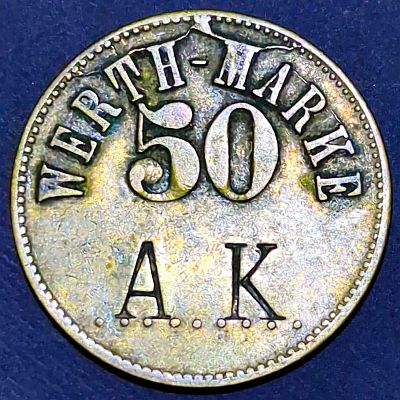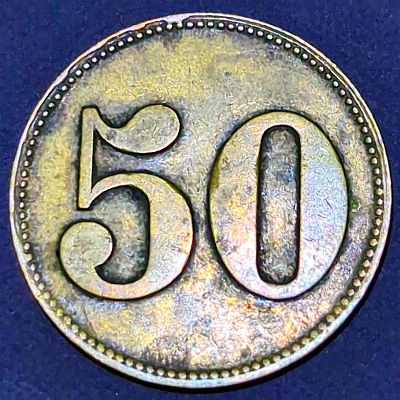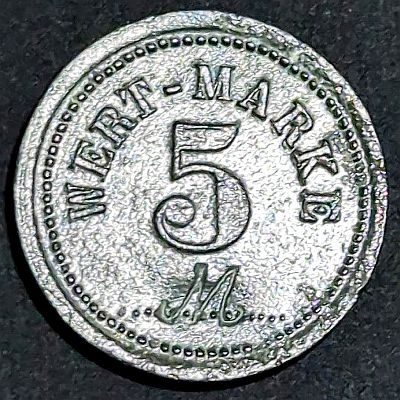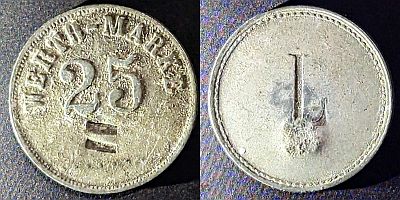Werth-Marke or Wert-Marke (as one or two words, with or without the “h”) tokens are generic German tokens. Used in hotels, institutions, prisons and elsewhere. Here is one worth 50 Pfennig:

Generic tokens have been used all over the world. They are a cost effective way of using tokens in your business without the extra expense of customising dies with your own details. From France, you will find “A Consommer” or “Jeton Prime”. From the US, you will find “Good for 5c” (or another value). The frustrating thing about these pieces is that they often can’t be identified.
But, if you can let go of that, the fascinating thing about these pieces is the varied range of subtle differences between them. One interesting thing about this piece is the large “die crack”, particularly around the M of Marke and some of the other letters. To make a coin or token, a “die” is created, a piece of metal with the inverse of the design – this is then pressed by machine into the blank metal or “planchet”. Over time, after striking many coins or tokens, the dies start to wear out, and cracks can appear. This can be seen from above the R in Werth, to above the A in Marke. There is a smaller crack starting to form in the die, running straight from the top of the A to the top of the R.
On one side, these tokens the text “Werth-Marke” or similar, with the value, and often a dotted line underneath. According to Token Catalog, “The spelling “Werth-Marke”, with an H, is fairly old. The 1902 spelling reform did away with that”. So, that may date this piece to prior to 1902.
On some pieces, there is a counterstamp with initials, or ideally, something to identify a particular organisation. On this piece, the letters A and K have been stamped.

The other side usually has simply the value, in larger letters. These were worth a number of Pfennig, so in this case, 50 Pfennig. The German Mark was divided into 100 Pfennig, so this token was worth 1/2 Mark at whatever establishment issued it.
Werth-Marke pieces make me picture being in an old German town, around 1900, maybe Bacharach on the Rhine:


Here is a piece made after the spelling reform with “Wert-Marke” without the H:

Note the numeral is larger and goes below the line of the W and E. And a very nice style of “M” counterstamp.
And here is another interesting piece:

Here is a different piece. Made of zinc rather than brass, note that the start and end of the text “Werth-Marke” is not as neatly in line with the bottom of the value. Instead of initials, this piece has what looks like an equals sign = stamped very heavily on the obverse. The indentation from this can be seen on the reverse where instead of a value, the letter L has been stamped.
I found this page on World of Coins with a few more variations. The main reference I have found for these, at least mentioned on Numista, is “Deutschsprachige Notmünzen und Geldersatzmarken im In- und Ausland” by Peter Menzel.


Leave a Reply